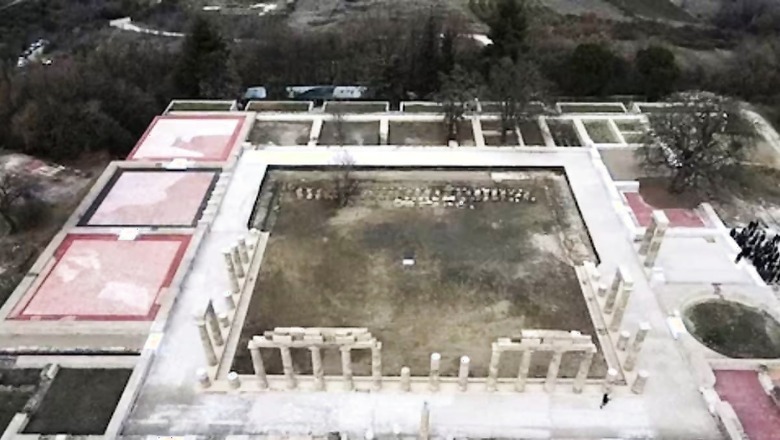
views
Archaeologists claim to have unearthed Alexander the Great’s bathroom at the Aigai Palace in northern Greece. Situated in the ceremonial heart of the ancient Macedonian kingdom, the expansive Aigai palace spans 15,000 square meters, dwarfing even the Parthenon in size.
Its features include city walls, a courtyard, temples, sanctuaries, a theatre, a palaestra (boxing school) and tombs. The revelation of this discovery will be showcased in the concluding episode of the Channel 4 series “Bettany Hughes’ Treasures of the World," scheduled to air on May 11.
Hughes describes the discovery, “There’s a significant drain carved into the rock, along with a communal bathroom. This area is believed to be where Alexander the Great would have bathed alongside his companions, including his renowned favourite, Hephaestion, and the multitude of young men who accompanied him during campaigns and later vied for control of his empire following his demise." Because he was Alexander’s favourite, Hephaestion was called his second-in-command. He used to go on trips with him. Both of them were trained in combat and wrestling as well as hunting. According to the archaeologists, his bedroom has not been identified yet.
In January, Greece unveiled the restored Palace of Aigai, where Alexander the Great ascended to the throne, following years of restoration efforts. Originally known as Vergina, the Palace of Aigai is not only the largest but also one of the most significant structures of classical Greece, alongside the Parthenon.
Built during the reign of Philip II (359 – 336 BC) on an elevated site in Vergina, northern Greece, the palace was a monumental edifice, serving as a potent symbol of authority and aesthetics, boasting dimensions three times larger than the Parthenon and commanding views over the entire Macedonian region. Archaeological findings indicate continuous habitation of the site since the Early Bronze Age (3rd millennium BC), with its significance growing during the Early Iron Age (11th to 8th centuries BC) when it became a prosperous and densely populated hub.


















Comments
0 comment